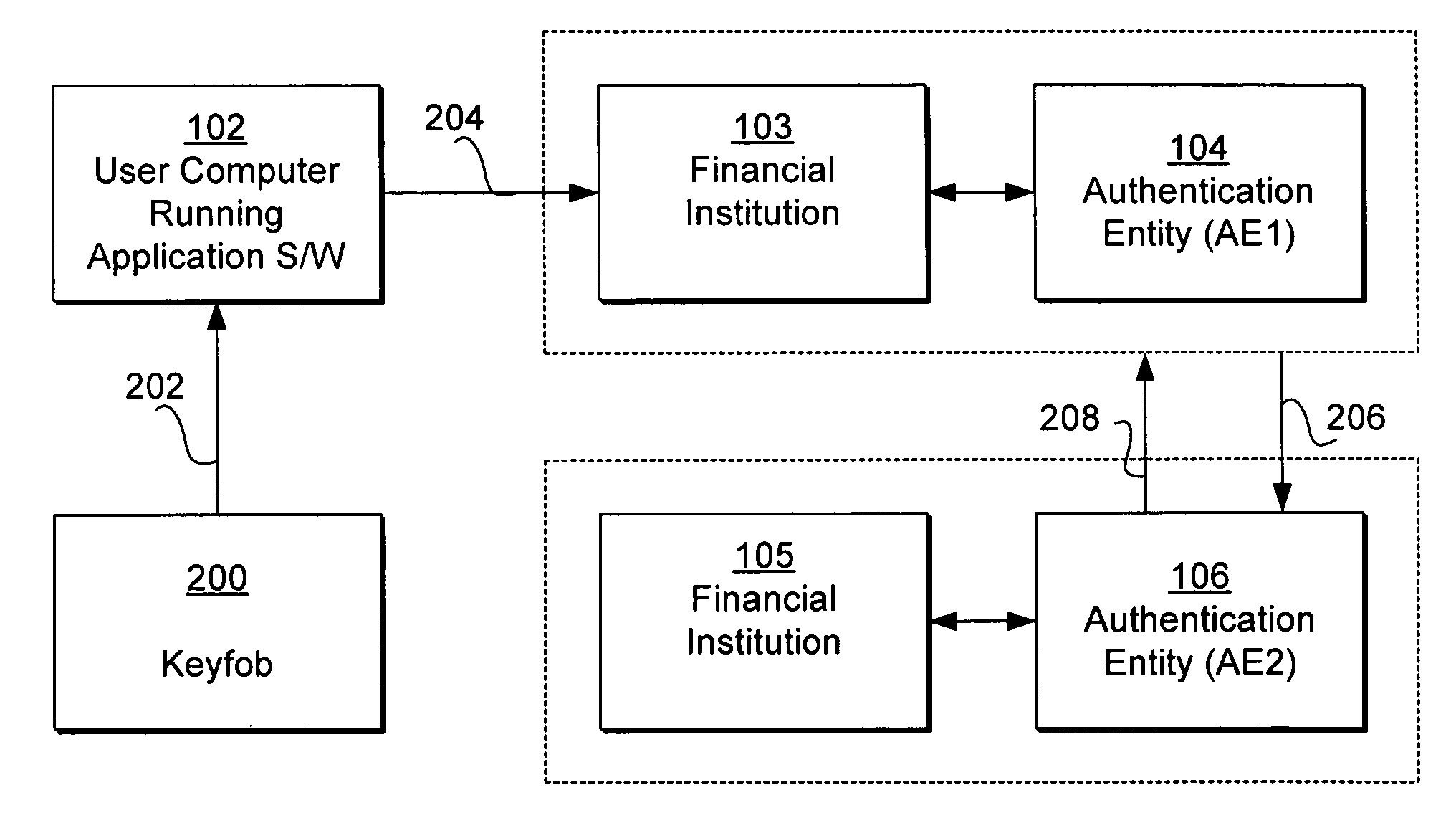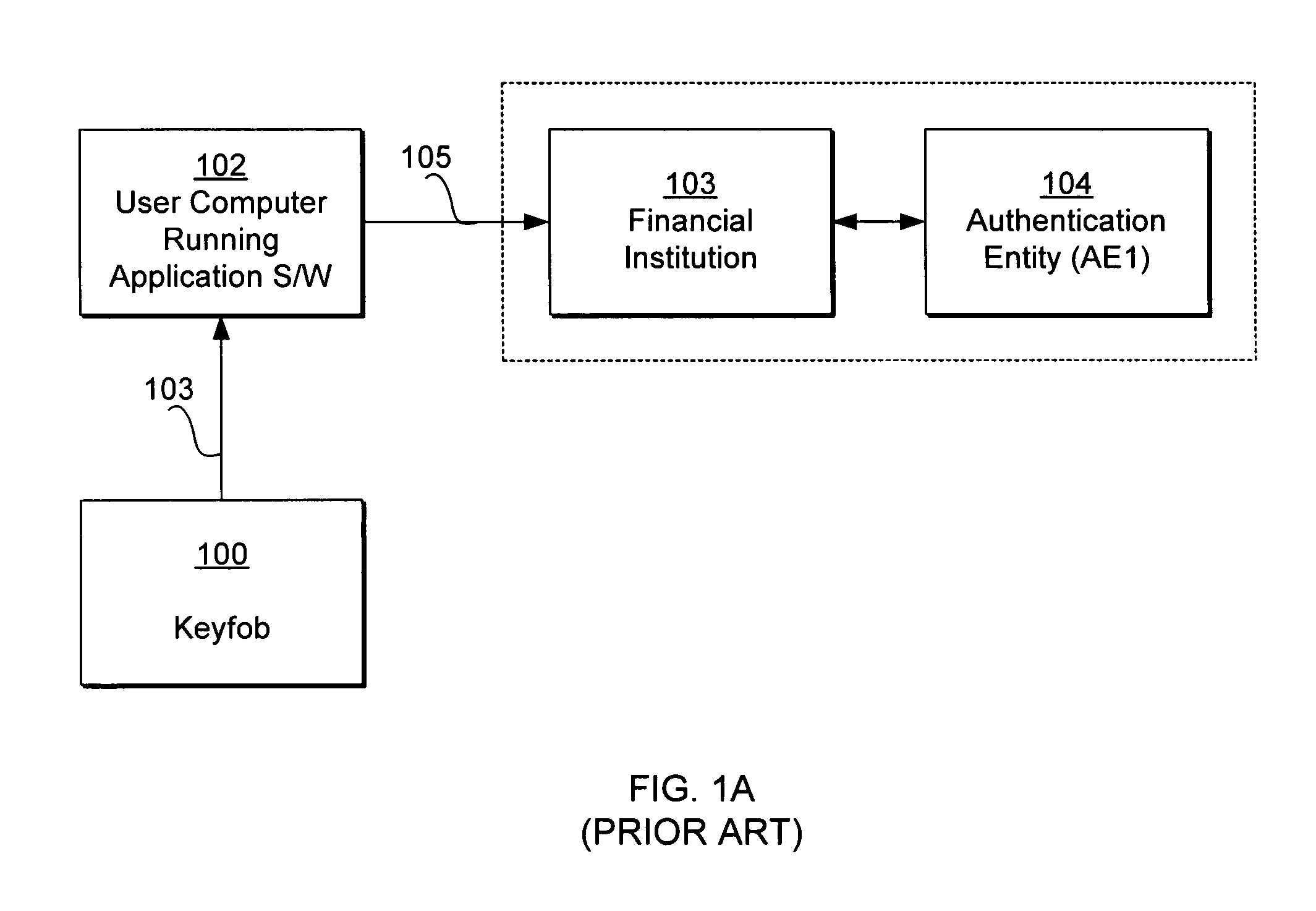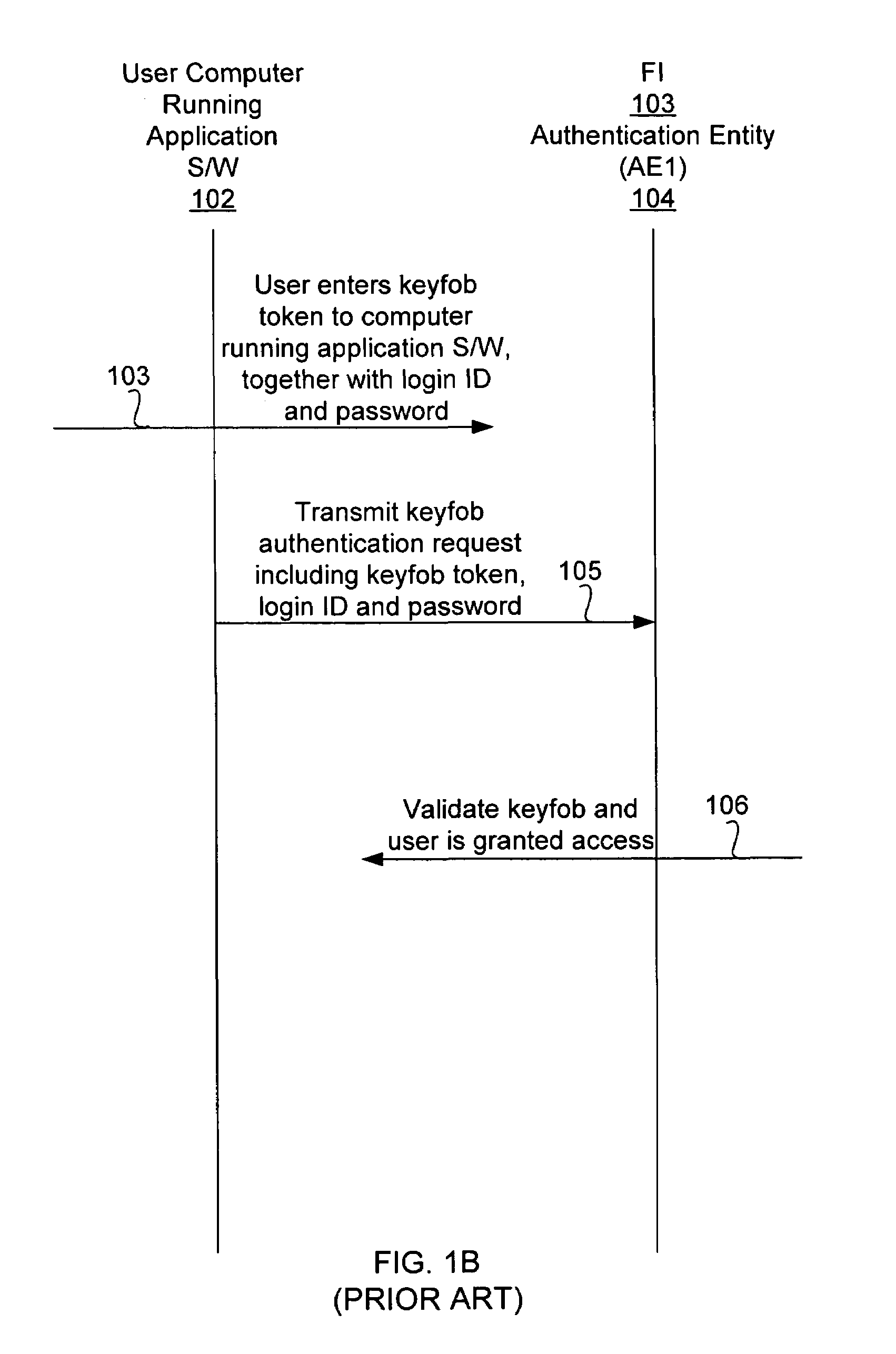Keyfob for use with multiple authentication entities
a technology for authentication entities and keys, applied in the field of keys, can solve problems such as inconvenience for users
- Summary
- Abstract
- Description
- Claims
- Application Information
AI Technical Summary
Benefits of technology
Problems solved by technology
Method used
Image
Examples
first embodiment
[0026]FIG. 2A is a block diagram and FIG. 2B is an interaction diagram, both illustrating how a keyfob is used with a computer system to access the computer of a financial institution (authentication entity) where the keyfob was issued by another authentication entity, according to the present invention. For purposes of illustration, the embodiment in FIGS. 2A and 2B illustrate a situation where a user of a financial application software, such as Quicken® marketed by Intuit Inc. of Mountain View, Calif., running on a user computer 102 accesses the computer of a financial institution (FI) 103 such as a bank associated with an authentication entity (AE1) 104 and downloads his financial data from the FI 103 to the financial application software, using a keyfob issued by another Authentication Entity (AE2) 106. Although the keyfob was issued by the Authentication Entity (AE2) 106, the Authentication Entity (AE1) 104 is capable of authenticating the keyfob through the Authentication Enti...
second embodiment
[0030]FIG. 2C is a block diagram illustrating how a keyfob 250 is used with a computer system to access the computer of a financial institution (authentication entity), according to the present invention. The keyfob 250 in FIG. 2B is different from the keyfob 200 in FIG. 2A in that it stores AEIDs associated with a plurality of authentication entities 104, 106 and includes mechanisms for generating keyfob tokens associated with and in synchronization with the plurality of authentication entities 104, 106. Each keyfob token is generated in synchronization with the authentication entity corresponding to its associated AEID. Therefore, the keyfob 250 is capable of being validated by a plurality of authentication entities 104, 106 identified by the plurality of AEIDs.
[0031]Referring to FIG. 2C, the keyfob 250 has mechanisms for generating keyfob tokens in synchronization with both authentication entities 104, 106, and also stores the AEIDs corresponding to both authentication entities 1...
third embodiment
[0033]FIG. 2D is a block diagram illustrating how a keyfob is used with a computer system to access the computer of a financial institution (authentication entity), according to the present invention. The embodiment in FIG. 2D illustrates a situation where a keyfob 250 has mechanisms for generating tokens in synchronization with multiple authentication entities but not with the authentication entity that the application software running on the user computer 102 attempts to access.
[0034]Referring to FIG. 2D, the keyfob 250 has mechanisms for generating keyfob tokens in synchronization with both authentication entities 104, 106, and also stores the AEIDs corresponding to both authentication entities 104, 106. However, the keyfob 250 does not have mechanisms for generating tokens in synchronization with the authentication entity (AE3) 108. The authentication entity (AE3) 108 is the authentication entity associated with the financial institution 107 that the application software running...
PUM
 Login to View More
Login to View More Abstract
Description
Claims
Application Information
 Login to View More
Login to View More - R&D
- Intellectual Property
- Life Sciences
- Materials
- Tech Scout
- Unparalleled Data Quality
- Higher Quality Content
- 60% Fewer Hallucinations
Browse by: Latest US Patents, China's latest patents, Technical Efficacy Thesaurus, Application Domain, Technology Topic, Popular Technical Reports.
© 2025 PatSnap. All rights reserved.Legal|Privacy policy|Modern Slavery Act Transparency Statement|Sitemap|About US| Contact US: help@patsnap.com



